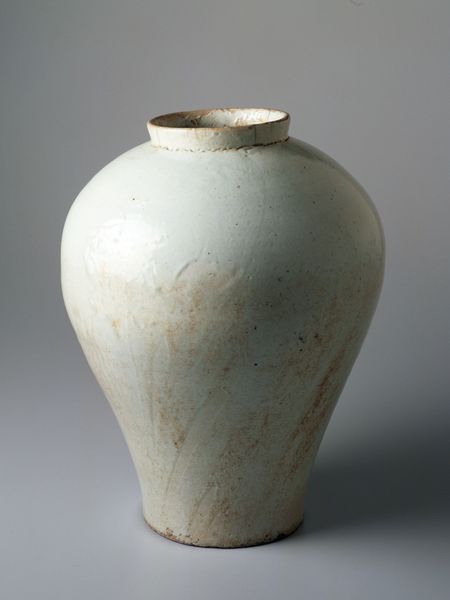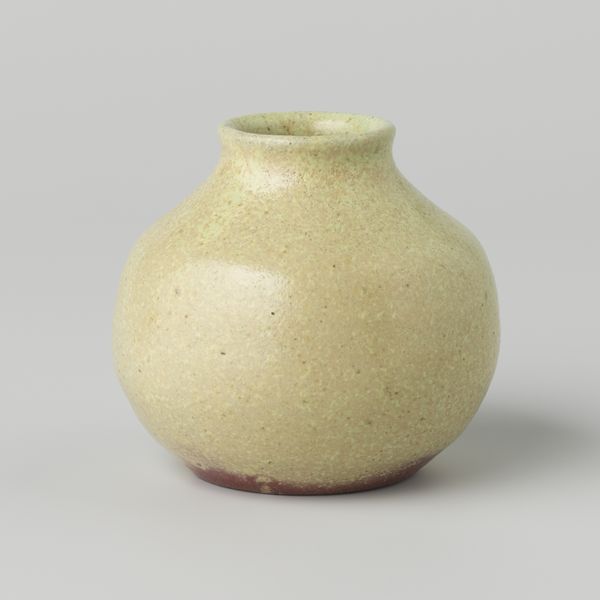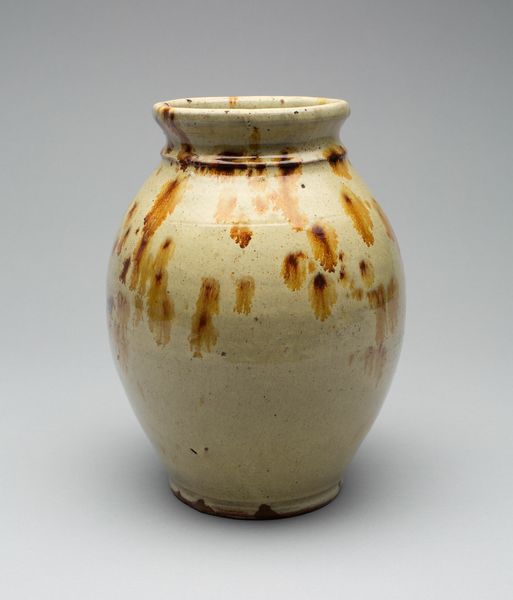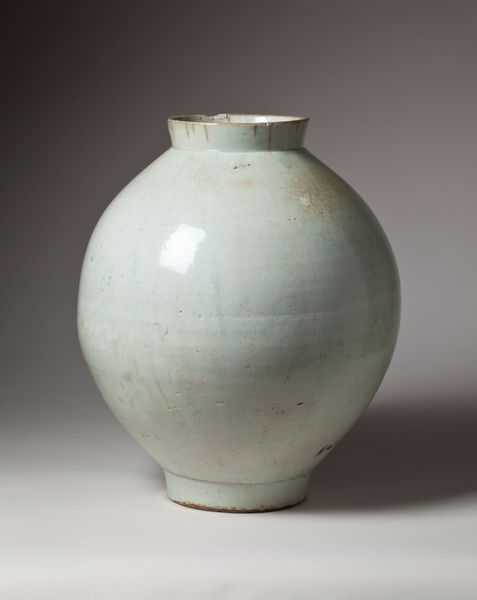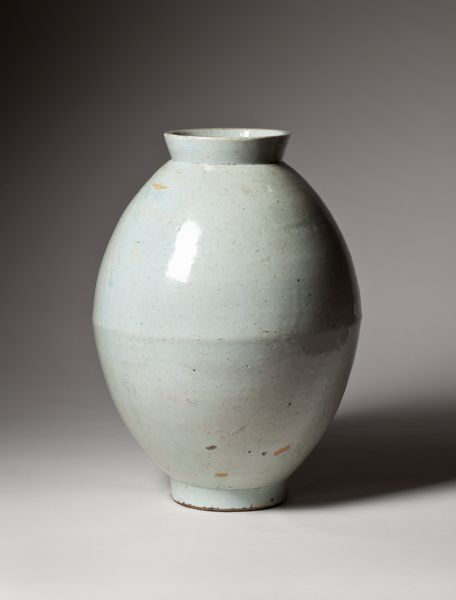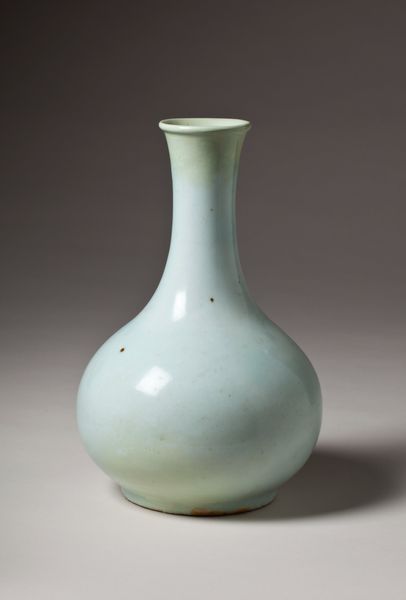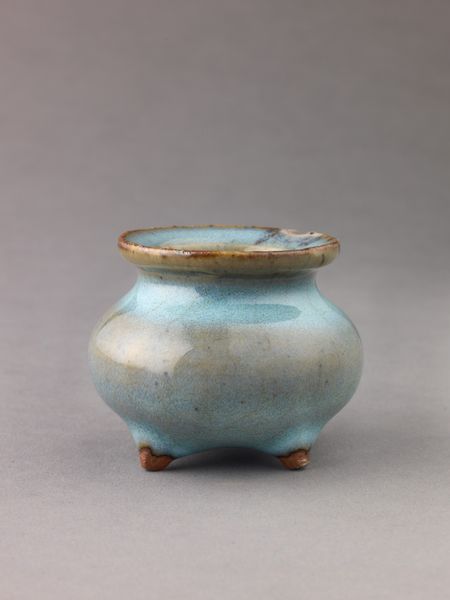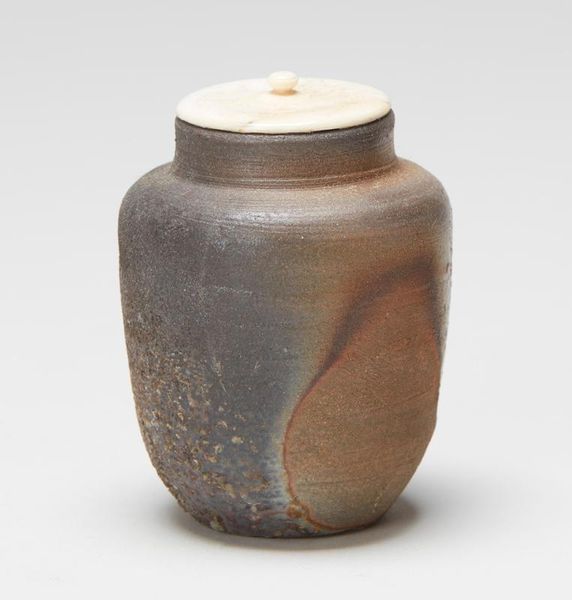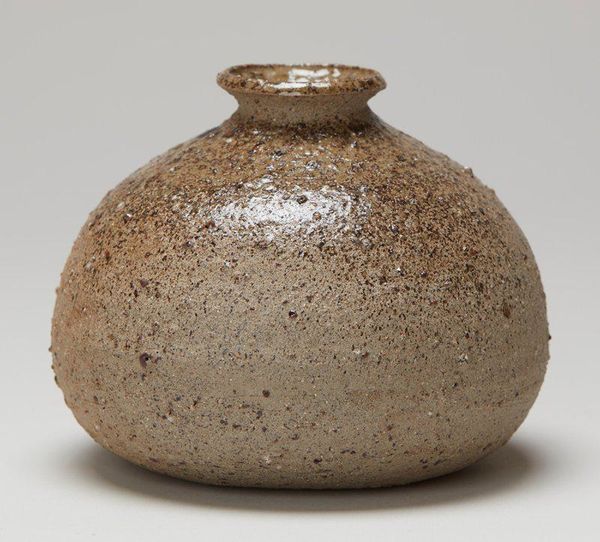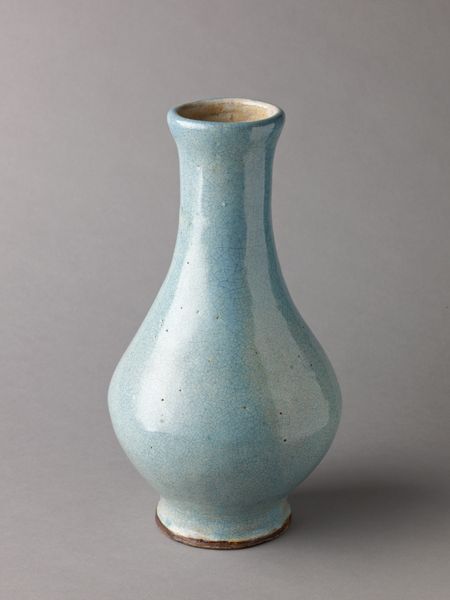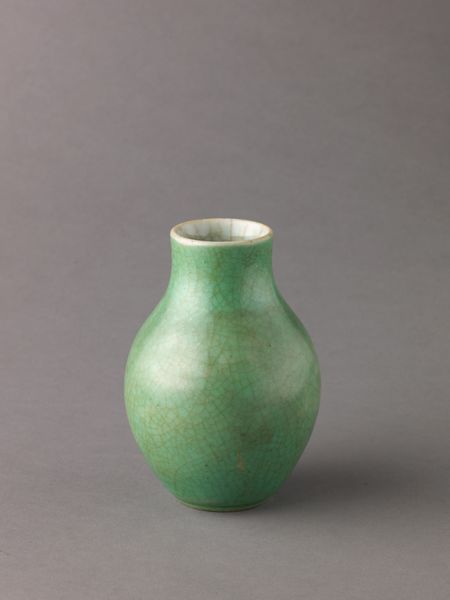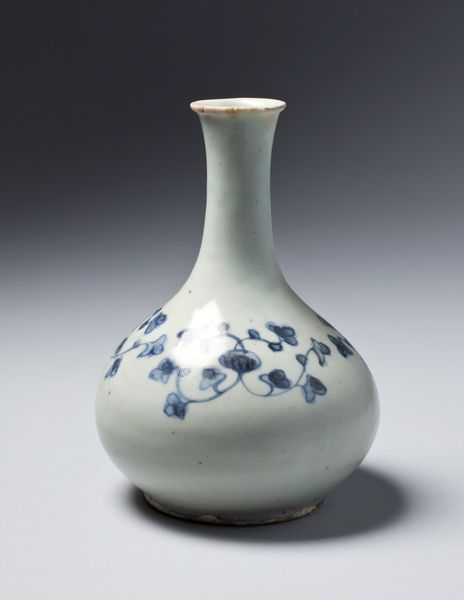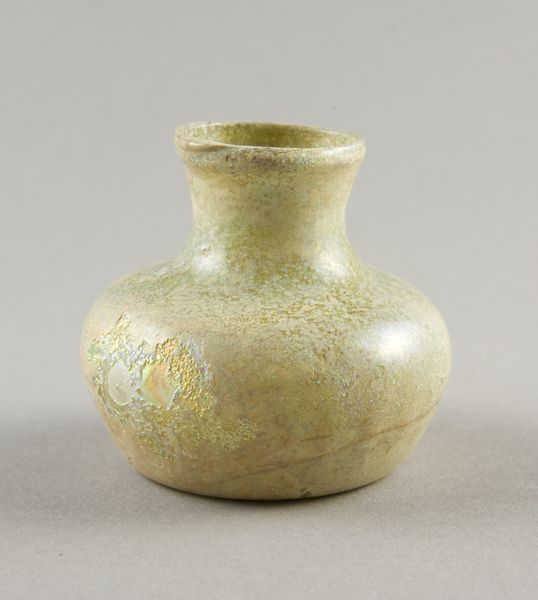
ceramic, earthenware
#
asian-art
#
ceramic
#
earthenware
#
ceramic
Dimensions: 4 3/4 × 3 1/2 × 3 1/2 in. (12.07 × 8.89 × 8.89 cm)
Copyright: No Known Copyright
Curator: This is a “tokkuri,” or flask, by Tabuchi Tarō, made of earthenware and ceramic in 2012. What are your first impressions? Editor: A kind of austere beauty. It has a rustic quality with the off-white glaze and the unassuming shape, but its slightly asymmetrical form brings a human element, don't you think? Curator: I do. I think Tabuchi’s work engages with a compelling tension here: ceramic practice in Japan holds so much history and tradition, especially around the making and use of sake vessels like this one. Yet, at the same time, he is clearly interrogating what those inherited ideas mean for contemporary craft. It speaks to broader tensions of identity, where individuals must find the balance between honouring history and defining one's self and place within society. Editor: Absolutely, and the shape contributes to this feeling of a personal, imperfect creation. You immediately feel how this object would feel in the hand. Consider how it would feature in a ceremony; in what ways can you detect symbolic importance that makes you aware of its intended ritual use? The flask form—bulbous and narrow-necked—also speaks of containment, restraint. Perhaps suggesting both the enjoyment of sake, and its careful measured offering. Curator: It's fascinating to consider the vessel itself as an embodiment of cultural expectations. The gentle curve from base to lip is repeated throughout historical East Asian ceramics but how might this modern interpretation alter or affirm our understanding of the roles associated with drinking vessels? In Japan, the practice of sharing sake is powerfully symbolic; so what could it signify in contemporary society by altering shape and form like this? Editor: Right! Perhaps it reflects a shift from formal ritual towards more individualized experiences, or speaks about a wish for closeness despite new physical or social boundaries between people. There's this beautiful tension. A silent witness to changing ways. Curator: Well, on that contemplative note, perhaps we've inspired our listeners to consider their own experiences when they look at it. Editor: Here's hoping! Let the dialogues begin.
Comments
No comments
Be the first to comment and join the conversation on the ultimate creative platform.
